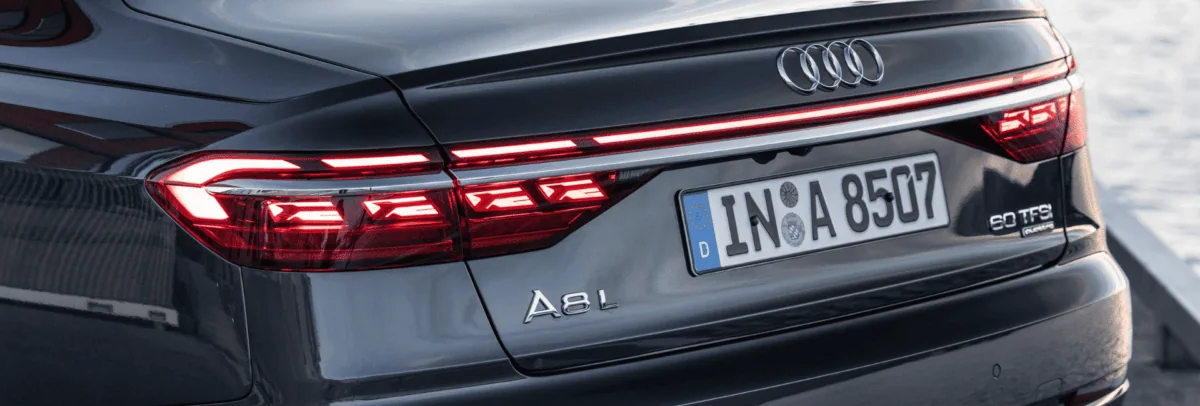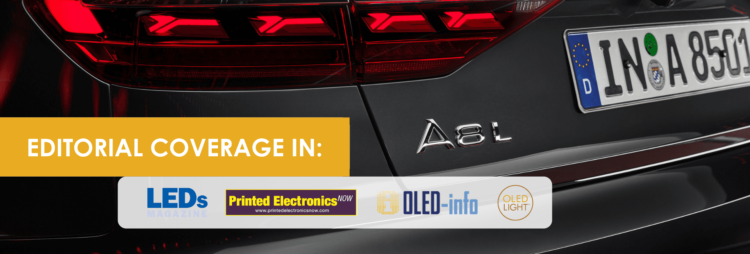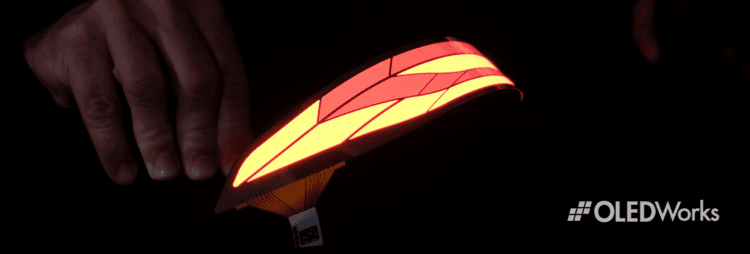
OLED lighting featured in Fast Company as an emerging technology revolutionizing automotive lighting
Excerpt below originally published by Fast Company
In the latest concept cars as well as production vehicles now available from brands like Audi, Rivian, Chevrolet, and Lincoln, designers are creating headlights and taillights that do far more than simply light up the road.
There are so-called adaptive driving beam headlights that can automatically shadow out and avoid shining in the eyes of oncoming drivers, and spotlights that can detect pedestrians and cyclists on the side of the road. There are animated displays that sparkle up when an owner approaches their car, and taillights using more finely controllable OLEDs that can boost their brightness when an approaching vehicle comes up close behind.
New and emerging technologies are making it possible for lighting to better blend into the shape of the car, or even be embedded in glass windshields. In cars today, these advancements have meant a smoother overall form.
Emerging technologies make this blurring of body and light even more possible, according to Stephan Berlitz, head of Audi’s lighting development. Digital micromirrors in Audi’s matrix LED headlights use 1.3 million tiny mirrors to precisely shape and project light, making it possible to sculpt the lighting enclosures without sacrificing lighting performance. And the digital OLED rear lights on some new Audi models have a flexible substrate that allows them to wrap around three-dimensional surfaces. “That not only sharpens the form, but it also makes it possible to integrate digital light design within the exterior of the lights, enabling symbol displays for additional communication with the outside world,” says Berlitz.
—


